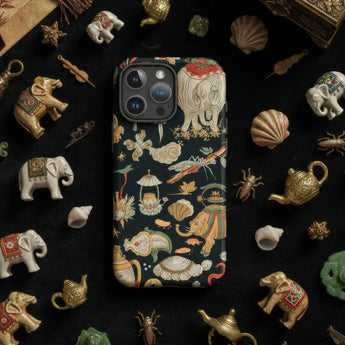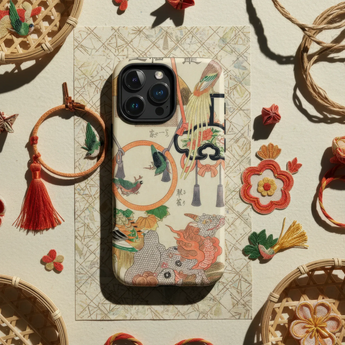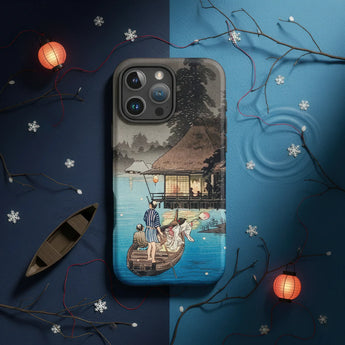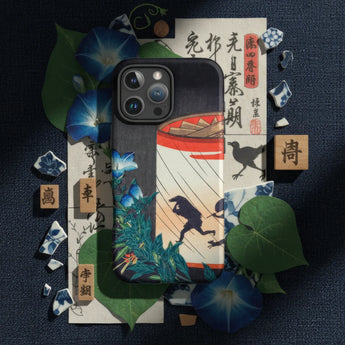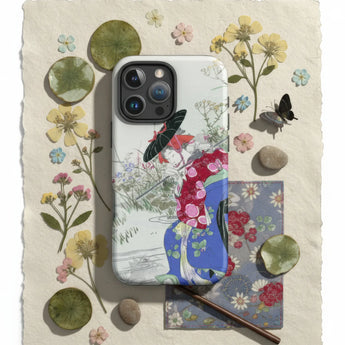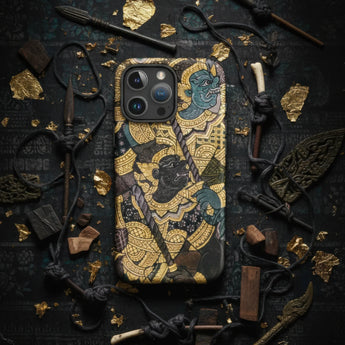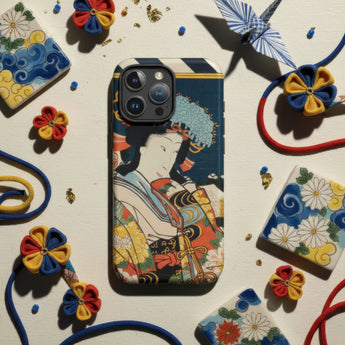Islamic Art Phone Cases
Embark on a digital pilgrimage with these Islamic art iPhone and Samsung cases, where every swipe and tap becomes a sacred ritual in the palm of your hand. These Islamic phone cases aren't just protective shells; they're portable prayer rugs for your smartphone, each one a miniature mihrab pointing you towards the qibla of style.
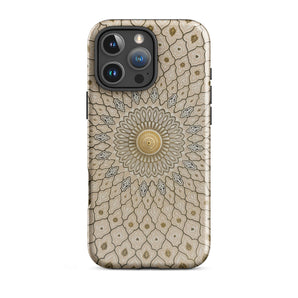
Quick view 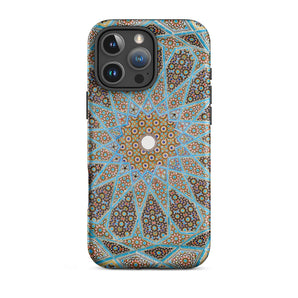
Quick view 
Quick view 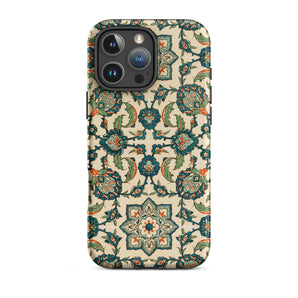
Quick view 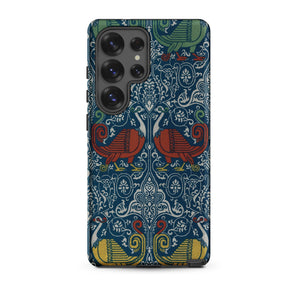
Quick view 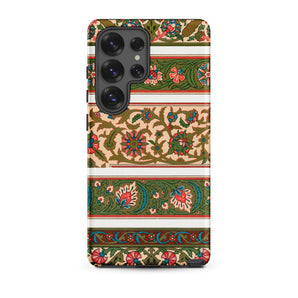
Quick view 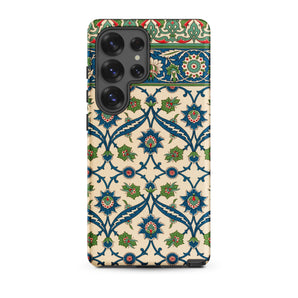
Quick view 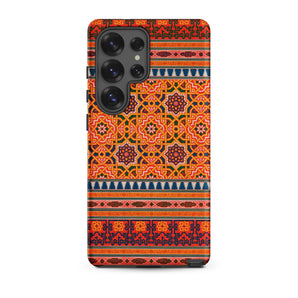
Quick view 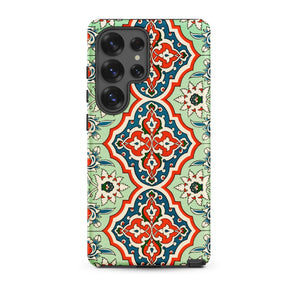
Quick view 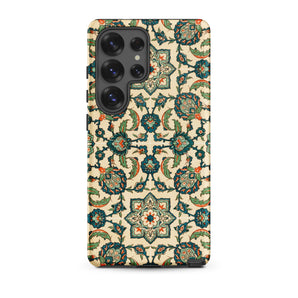
Quick view 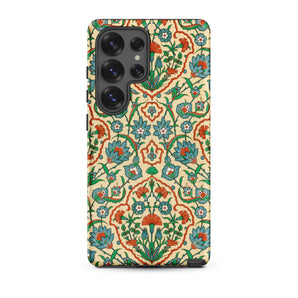
Quick view 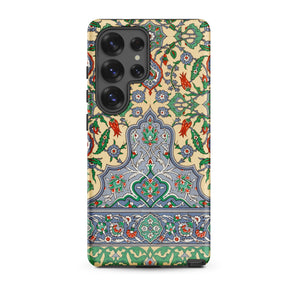
Quick view 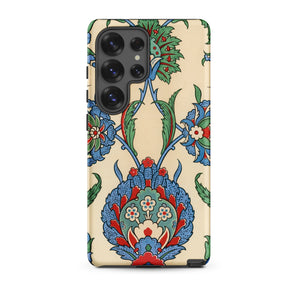
Quick view 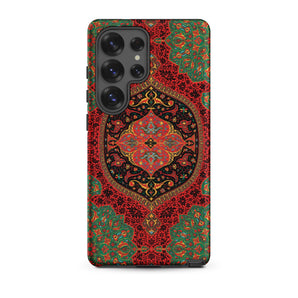
Quick view 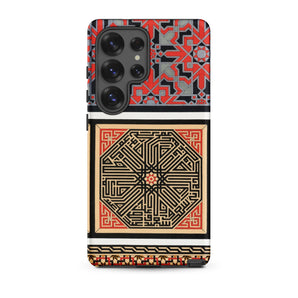
Quick view 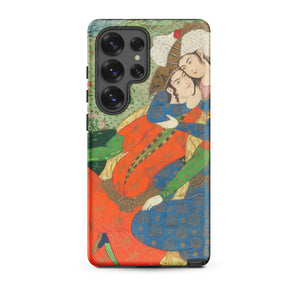
Quick view 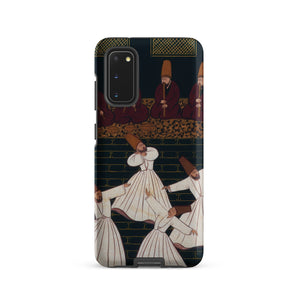
Quick view 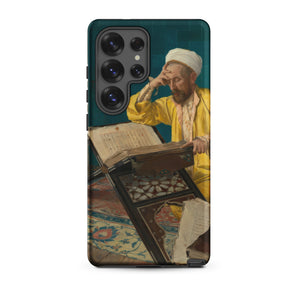
Quick view 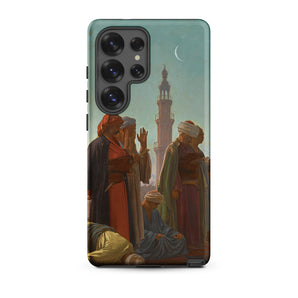
Quick view 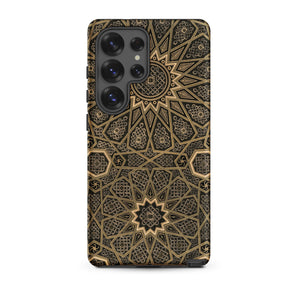
Quick view 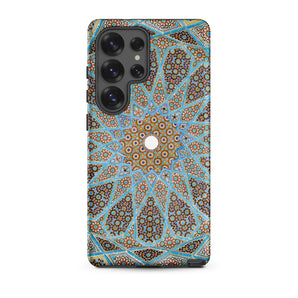
Quick view 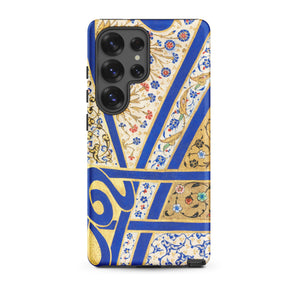
Quick view 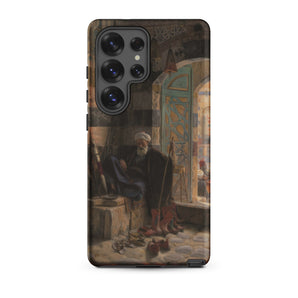
Quick view 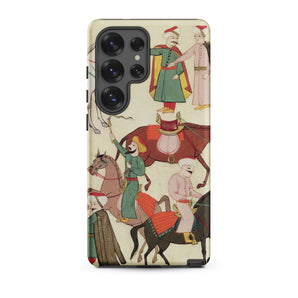
Quick view 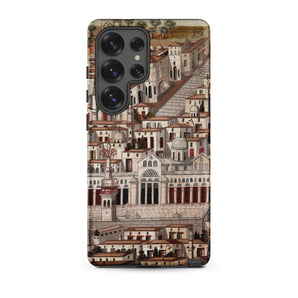
Quick view 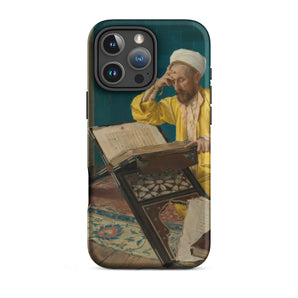
Quick view 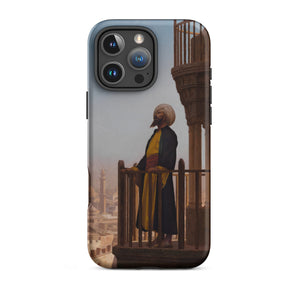
Quick view 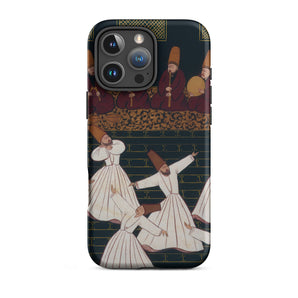
Quick view -
Your Latest Loves
FAQs
About this collection
What fits in the palm, yet holds a universe? These Islamic geometric patterns, traced in light and shadow, fold infinity into your fingers—where each phone case hums with the ancient pulse of Islamic art, geometry flowing like water through marble courtyards from Alhambra tiles to the luminous latticework of Mamluk mosques.
Imagine intricate tessellations dancing across your device. A feast for the eyes, serving up a smorgasbord of Arabesque geometric patterns that would make Ibn al-Haytham's head spin. Transforming your smartphone into a handheld haram of heavenly aesthetics. Picture the star polygons of Moroccan zellij tile work spiraling into infinity, or the intricate floral motifs of Ottoman illumination in bloom.
Each Islamic iPhone and Samsung case is a rebellion against the bland tyranny of minimalism, a vibrant declaration that even in our digital age, the timeless beauty of Islamic Arabesque art refuses to be silenced. Crafted with the precision of a master calligrapher and the durability of Damascus steel, these arabic phone cases don't just protect your device; they elevate it to the status of a cultural artifact.
Every star repeats itself into forever, every muqarnas vaults upward, echoing the divine order that shaped both Ottoman tessellations and Seljuk tilework, where symmetry is not decoration, but devotion made visible.
Your screen, now framed in Arabic geometric design, becomes a portal where algebra meets beauty, where Zellij mosaics and Ilkhanid star patterns guide your hand like a compass rose pointing toward Mecca.
Even in your pocket, these designs guard more than glass—they hold centuries, from Timurid vaults glittering with eight-pointed stars to the quiet hum of a single arabesque border, repeating and dissolving like whispered prayer.
This is not just ornamentation; this is theology etched in pattern, a reminder that even the smallest surface can become a mihrab, facing something greater than itself.
So let your iPhone or Samsung become a beacon of beauty in a sea of digital monotony, a pocket-sized portal to the golden age of Islamic artistry that proves, beyond a shadow of a doubt, that paradise isn't just a promise for the afterlife – it's right here in your hand, one Arabesque wonder at a time.
What are the 4 types of Islamic art?
Islamic Calligraphy
Calligraphy is the artistic practice of handwriting. Islamic calligraphy developed from the need to produce Qur'ans and other religious texts. Calligraphy became one of the most revered art forms in the Islamic world. Common scripts used in Islamic calligraphy include Kufic, Thuluth, Naskh, Muhaqqaq, Riqa' and Tawqi'. Calligraphy is found on architecture, coins, ceramics, and textiles.
Islamic Geometric Patterns
Geometric patterns are common in Islamic art, largely because their abstract, non-representational nature complies with the Islamic prohibition of idolatry. Geometric designs are used to decorate buildings and objects ranging from monumental architecture to small ceramic tiles. Common geometric patterns include spirals, circles, stars, polygons, and interlacing lines.
Islamic Arabesque
Arabesque refers to the elaborate application of repeating geometric forms and vegetal motifs. This type of dense decoration is common across mediums like architecture, ceramics, textiles, and manuscripts. The motifs are often stylized versions of plants, sometimes interlaced with geometric patterns.
Islamic Figural Representation
While religious Islamic art avoids figurative images for worship spaces, figural art did develop in some contexts. Manuscript painting, ceramics, textiles, and secular architecture feature representations of human and animal figures. These images were often stylized in keeping with the non-naturalistic tendencies of Islamic art.
What are the main themes in Islamic art?
Religion
Islamic art is deeply connected to religion, as it grew out of the need to adorn mosques and religious scriptures. Calligraphy of Quranic verses is a major theme, seen on architecture, coins, ceramics and more. Mosque architecture is also decorated with religious symbolism. However, not all Islamic art is religious in nature.
Ornamentation
Intricate ornamentation using geometric patterns, arabesques, and stylized plant motifs is prevalent in Islamic art. These abstract, non-representational designs comply with the Islamic prohibition on idolatry. Ornamentation is found across mediums like ceramics, textiles, manuscripts, and monumental architecture.
Interconnections
Islamic artistic styles and techniques reflect interconnections between different cultures through trade and diplomacy. Chinese influences shaped Islamic pottery and textiles, while Central Asian nomadic styles also contributed. Islamic art builds on Byzantine, Persian, Roman, and other traditions.
Diverse Patronage
Islamic art was sponsored by a diverse range of patrons including caliphs, kings, other elites, and everyday people. Art was produced for religious, official, and personal contexts. This variety of patronage led to diversity and innovation in materials and techniques.
Technical Innovation
Islamic art is marked by constant technical innovation and mastery of materials like ceramics, metalwork, stucco, glass, and more. The production of luxury objects and architectural ornamentation advanced many technical skills.
What do colors symbolize in Islamic art?
Overview of Color Symbolism in Islamic Art
Color has deep symbolic meaning in Islamic art and is closely tied to religious beliefs. The Quran mentions several significant colors, and these colors took on spiritual meaning for Muslims. Common colors and their meanings include:
- Green - Associated with paradise, nature, and Islam itself. Often used to decorate mosques.
- Blue - Represents heaven, spirituality, and truth.
- White - Symbolizes purity, light, and innocence.
- Red - Passion, power, and sacrifice. Also associated with the blood of martyrs.
- Black - Mystery, mourning, and the unknown.
- Gold - Wealth, glory, and enlightenment.
Beyond specific color symbolism, Islamic art emphasizes bright, vibrant colors as a reflection of the divine light. Intense reds, blues, greens, and gold leaf illuminated manuscripts and mosques, creating a sense of splendor.Floral motifs were common in Islamic art. Stylized leaves, vines, flowers represented the wonders of paradise described in the Quran. Geometric patterns also featured prominently, as Islam prohibits figurative images. Calligraphy was used decoratively.
Examples of Color Use
- Green dominates mosque interiors, covering walls, carpets, and domes. Green tiles decorate facades.
- Blue is prominent in tilework and glazed ceramics, such as those covering the Mosque of Sultan Hassan.
- Gold leaf embellished Qurans and other manuscripts. Pigments like cinnabar, vermilion, and saffron yellow were used in illustrations.
- Persian miniatures combined vibrant mineral pigments and gold leaf. The painting "Youth Reading a Letter" features a vibrant red ground with a youth in a green robe against a gold background.
- Textiles featured colorful designs. Ottoman silks used saffron yellow, indigo blue, crimson reds and emerald greens in complex patterns.
In summary, color was an integral part of conveying spiritual meaning in Islamic art. Vibrant hues reflected the divine light while specific colors carried symbolic significance derived from the Quran and other Islamic texts. The exuberant use of color created a sense of paradise on earth.
What do patterns symbolize in Islamic art?
Islamic art is characterized by the use of geometric patterns and motifs rather than figurative images, as Islam prohibits depictions of God, prophets, and living beings. These repetitive geometric designs reflect the infinite and perfect nature of God. Here are some common patterns and their significance:
- Circles - Represent unity, perfection, and the divine. Circles commonly overlap and interconnect, symbolizing the unity of the cosmos.
- Stars - Symbolic of divine guidance. Stars are often drawn with 6 points representing the six days of creation. 8-pointed stars represent paradise.
- Squares - Stability, honesty, and earthly existence. Squares often contain circles, juxtaposing earth and the heavens.
- Octagons - An 8-sided polygon associated with paradise and renewal. The 8 sides can represent the 8 levels of paradise.
- Calligraphy - Elegant Arabic script used decoratively. Quranic verses and God's attributes like mercy and wisdom were common.
- Floral Motifs - Stylized leaves, vines and flowers reflect paradise. The 'Tree of Life' represents immortality. The lotus is a symbol of purity.
- Muqarnas - Three-dimensional honeycomb shapes decorate domes and vaults. This ornate geometry reflects infinite divine wisdom.
- Girih Tiles - Elaborate interlaced star and polygon shapes tile surfaces in complex harmonious patterns, reflecting order in the universe.
In summary, geometric patterns in Islamic art reflect religious beliefs about God, paradise, and the nature of the universe. Their repetitive nature conveys infinity, order, and the oneness of God.
Why doesn't islamic art include humans or animals?
The avoidance of depicting living beings in Islamic art stems from the Islamic prohibition against idolatry and creating graven images. The Quran does not explicitly prohibit visual representation of living beings, but there are some hadith (sayings and actions of Prophet Muhammad) that prohibit it. However, the extent and interpretation of this prohibition has varied significantly across time periods, regions, sects and scholars in Islam. Here is a brief overview:
- In religious contexts like mosques, Qurans, etc. depictions of living beings are generally prohibited. This is because of the risk of them being worshipped as idols.
- In secular contexts like books, palaces etc. depictions were more common, especially during the Ottoman, Safavid and Mughal empires. However, religious scholars often discouraged or criticized such art.
- Figurative art was often stylized or abstracted rather than naturalistic to avoid accusations of idolatry. For example Persian miniatures show figures with little detail.
- Calligraphy and geometric designs were emphasized as an alternative to depictions of living beings.
- There are differences of opinion between Sunni and Shia scholars on the extent of this prohibition. Some Sunni scholars allow images as long as they are not worshipped.
So in summary, Islamic art tends to avoid figurative depictions, especially in religious contexts, due to the prohibition of idolatry. But the extent of enforcement and interpretation has varied across history. It is not completely forbidden in secular contexts.
When did islamic art begin?
Islamic art emerged in the 7th century CE after the rise of Islam and establishment of the first Islamic empires. It encompasses the visual arts produced across Islamic territories over the past 1400 years.Some key points on the origins and early development of Islamic art:
- The religion of Islam was founded by the prophet Muhammad in the early 7th century CE in Mecca. After his death in 632 CE, Islam spread rapidly under the Rashidun and Umayyad Caliphates.
- Early Islamic art was influenced by the existing artistic traditions of the conquered territories. These included Byzantine, Coptic, Persian and Central Asian styles.
- Under the Umayyad Caliphate (661-750 CE), major Islamic architectural monuments were built, including the Dome of the Rock in Jerusalem and the Great Mosque of Damascus. Luxury arts like metalwork and ivory carving also developed.
- The Abbasid Caliphate (750-1258 CE) ushered in a golden age of Islamic art and culture. Major Abbasid artistic centers included Baghdad, Samarra and Cairo. Styles became more distinctly Islamic over time.
- Islamic art continued to evolve under later dynasties like the Ottomans, Safavids and Mughals. It incorporated new techniques and absorbed diverse cultural influences across the Islamic world.
Where can my order ship to?
Any treasure you find here can be shipped to:
North America
Canada, Mexico, Continental United States
South America
Argentina, Brazil
Europe
Albania, Andorra, Austria, Belgium, Bosnia & Herzegovina, Bulgaria, Croatia, Cyprus, Czechia, Denmark, Estonia, Faroe Islands, Finland, France, Germany, Gibraltar, Greece, Greenland, Guernsey, Hungary, Iceland, Ireland, Isle of Man, Italy, Jersey, Kosovo, Latvia, Liechtenstein, Lithuania, Luxembourg, Malta, Monaco, Montenegro, Netherlands, North Macedonia, Norway, Poland, Portugal, Romania, Russia, San Marino, Serbia, Slovakia, Slovenia, Spain, Sweden, Switzerland, United Kingdom, Vatican City
Middle East & Asia
China, Hong Kong, India, Indonesia, Israel, Japan, Lebanon, Malaysia, Philippines, Singapore, South Korea, Taiwan, Thailand, Türkiye, United Arab Emirates, Vietnam
Africa
South Africa
Oceania
Australia, New Zealand
—
Every package tracked so you can watch your treasure move from A to B to You.
Sent carbon neutral at no extra charge. Helping you gain peace of mind your money's being kind.
Orders to the rest of the world coming as soon as I can!
How much will shipping cost?
Delivery to 60+ countries
Free shipping worldwide — check if we ship to you
When will my package arrive?
USA: 4-9 days • Canada: 5-12 days • UK: 4-9 days • Europe: 5-10 days • Australia: 4-9 days • New Zealand: 5-12 days • Rest of the world: 3-4 weeks
Why the wait? Every treasure you find here is produced after you purchase. So the delivery times include production, quality assurance, thoughtful packaging and shipping. More details on orders and shipping
Every package tracked so you can watch your treasure move from A to B to You.
Sent carbon neutral at no extra charge. Helping you gain peace of mind your money's being kind.
Can I return my order?
1. Open Request
You're welcome to open a return / exchange request within 30 days of your order's delivery. All items for return must be delivered back in their original condition, with their original packaging included.
2. Wait For Approval
Expect a reply within 24-48hr
Once your return's approved, you'll receive the return address, so you can mail items back with confidence. Please wait for approval before mailing anything, to avoid confusion and disappointment.
3. Return Items
Return shipping: You pay for return shipping fees unless you received faulty / incorrect items or they get damaged in transit.
Tracking: Please send your items back with tracking. No refunds can be given for items that aren't received.
On sale: No returns or exchanges for discounted / on sale items unless they arrived damaged or faulty.
Payment method: After your return's approved, you'll be refunded via your original payment method.
...
Learn more about my step-by-step returns process.

